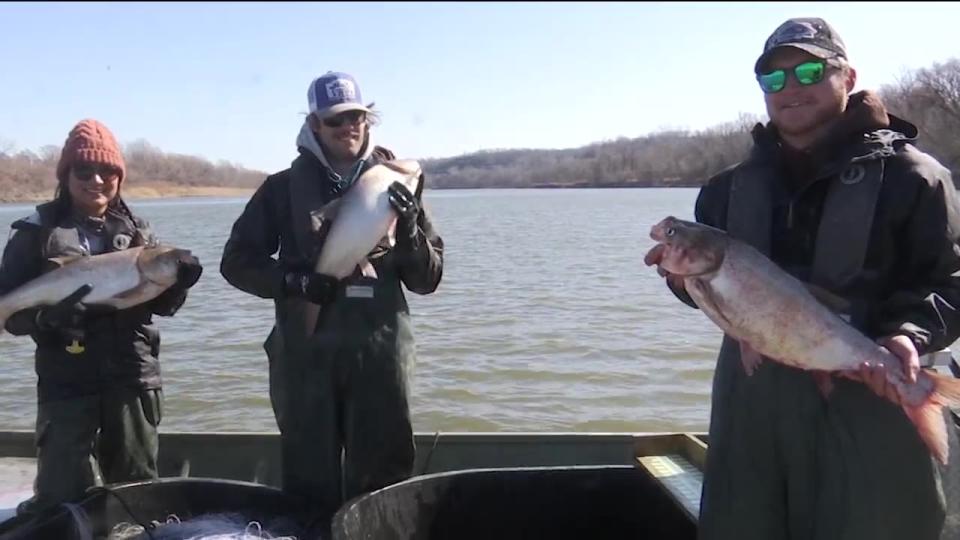Biologists remove 61,000 pounds of invasive carp from Kansas River

TOPEKA (KSNT) – A state biologist is giving an update more than two years in to the ongoing struggle to remove invasive fish that are strangling the Kansas River.
27 News spoke with Liam Odell, a Kansas Department of Wildlife and Parks (KDWP) invasive carp biologist, to learn the latest in the department’s efforts to remove invasive silver and bighead carp. Since 2022, the KDWP has steadily increased its efforts to remove the nuisance fish and is finding success in the undertaking.
Odell says biologists with the KDWP have managed to remove about 25,000 pounds of carp in 2022 and 2023. All in all, the department has removed around 61,000 pounds from their project area between the Bowersock Dam in Lawrence and the WaterOne Dam in the Kansas City area.
“We’re still after it,” Odell said. “As of right now, we’re still hitting the same location really hard.”
Kansas engineers fight to save Tuttle Creek reservoir from rising mud levels

The KDWP’s methods in catching the fish have changed little from the gillnets and electrofishing practices, though biologists are experimenting with different net sizes to improve their techniques. The fish remain confined to the Kansas River but there is still worry the carp may at some point jump over the Bowersock Dam during a rare flood, spreading further upriver.
“They haven’t moved into any new bodies of water yet,” Odell said. “We’re in the process of working on it, but there will be a barrier on Bowersock dam to create an additional buffer zone.”
This physical barrier will run along the top of the dam, preventing the carp from jumping over. Silver carp especially are known for their jumping abilities and could get over the dam if the water is high enough. Another solution deemed impractical by the KDWP would’ve involved the installation of an underwater acoustic system which is being experimented with by the U.S. Geological Survey (USGS).
Is it safe to drink water directly from the Kansas River?
Odell says the removal of the carp is a constant battle with KDWP teams hitting the water two of three times a week. It can be difficult to tell if any positive change is happening though.
“It seems like we are, can’t really say for sure,” Odell said. “It seems like we’re making a difference but, scientifically, I can’t guarantee that.”
At the end of the day, he hopes people will take time to learn how dangerous the fish are for Kansas’ native aquatic wildlife. Both bighead and silver carp take away a large amount of natural resources from other fish in the river.
“They pose a huge risk to our native populations of fish,” Odell said. “Don’t move them and be vigilant.”
‘United through food’: Kansas wild cook-off returns for summer 2024
27 News spoke with several KDWP biologists in 2023 about the actions being taken to remove the invasive carp from the river. You can find that story by clicking here.
KDWP Commissioners are expected to hear updates on invasive carp from Aquatic Invasive Species Coordinator Chris Steffen during an upcoming meeting. This will be at noon on Thursday, April 25 at K-State’s Salina campus at 2310 Centennial Road in the College Center Conference Room. You can watch the meeting live by clicking here or join via Zoom using this link.
For more Kansas Outdoors, click here. Keep up with the latest breaking news in northeast Kansas by downloading our mobile app and by signing up for our news email alerts. Sign up for our Storm Track Weather app by clicking here.
Follow Matthew Self on X (Twitter): https://twitter.com/MatthewLeoSelf
For the latest news, weather, sports, and streaming video, head to KSNT 27 News.
